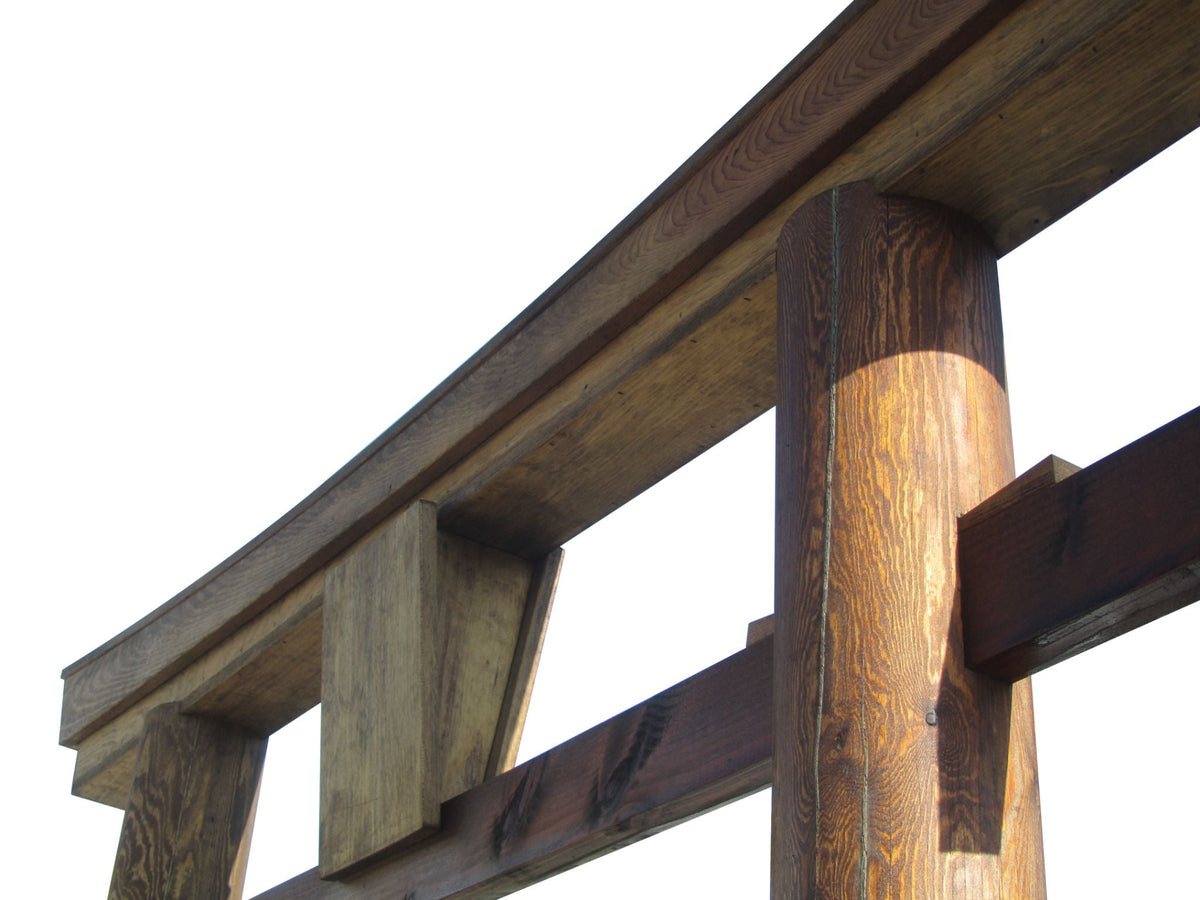
Establish mindfulness with a Japanese Torii Gate in your own backyard
|
|
阅读时间 6 min
|
|
阅读时间 6 min
Elevate your backyard into a personal oasis with SamsGazebos custom quality Japanese Torii Gates
Table of contents
Torii gates are among the most iconic and significant structures in Japan. They are believed to represent a gateway between the chaotic human world and the sacred realm of deities, inviting individuals to bow as if seeking permission to enter this spiritual space. Many experience a sense of divine presence in these areas, something that defies explanation. People often pray for health, prosperity, and protection from misfortune.
So, how can you create a serene atmosphere in your own backyard? Imagine a garden where you can embrace the changing seasons, nurture your spirit, and reconnect with your inner self. At SamsGazebos®, we understand the power of beautiful and functional garden structures that enhance your outdoor living space. Garden structures like torii gates and arched Japanese bridges symbolize the harmonious connection between humanity and nature, fostering tranquility, timelessness, and mindfulness.
In this article, I’ll share practical tips for achieving the perfect balance in your garden—one that creates a warm, inviting, and peaceful environment, while enriching your outdoor living experience.
Want to know more? Visit our store. www.SamsGazebo.com
Japanese torii gates are generally in two styles. One is Myojin style, the other Shinmei. A typical Myojin style torii gate is one like at Meiji Jingu shrine in Japan, comes with a curved head and stands with legs spread. Investing in a high-quality Japanese torii gate kit is essential for creating a welcoming and stylish garden. It is easy to find a decent Japanese bridge kit online at a reasonable price with a little research. A wooden Japanese torii gate symbolizes a pathway to tranquility, meditation, or an element to connect with deities in nature, promotes mindfulness.
When building a Myojin style Japanese torii gate, consider including these essential details:
The Gateway to the Sacred - "I also love how the symbol of a torii can outreach its material structure. I believe that the sacred world exists within. We can escape to an inner stillness in even the most chaotic moments. When I see a torii, I don't have to walk through it to achieve its power. Even from a distance, I am reminded to access an inner tranquility "
Product we recommend
Here are the must-have water features to complete a Japanese torii gate sanctuary in your backyard. A sound of running water is essential to establish a soothing effect and tranquility in your garden. Place one of these water elements in South East. Do not let water stay still.
Product we recommend
Avoid mixtures of colors that clutter your garden colors. Consult a landscape professional and carefully choose a color of trees or flowers for each area that thrive in your region.
Some of my favorites are:
Japanese temples and shrines feature relatively monotone gardens: pine trees, moss, bamboos, stones, and pebbles. However, there are always some flowers or trees to cherish each season; cherry blossoms and wisterias for spring, maple trees for autumn. Please note that bamboos are invasive and require a barrier to contain the roots, don't do well in the dry climate.
A gracefully arched wooden Japanese bridge makes a focal point, attractive destination in your garden, a great wood element to your pond or walkway. A garden bridge enhances the entrance to your backyard, inviting peaceful contemplation and connection with nature. Japanese pond bridge kits from SamsGazebos® work well with the Japanese theme, are available for fast delivery.
A revolving water wheel gently turns in the pond is a captivating attraction, its rhythmic motion enhances the serene atmosphere, and a great addition to your Japanese theme.
All water wheels from SamsGazebos® include stands, free-standing, and ready to set for your water flow. We are one of few that fabricate long-lasting water wheels.
Product we recommend
Avoid the danger zones
Declutter your yard
Energy flows
Consult a landscape professional
At SamsGazebos®, we provide a diverse range of handcrafted garden structures that are made in the USA, designed for easy coordination with your outdoor space. Please feel free to contact us for any questions about Japanese torii gate kits. info@samsgazebos.com All the images are provided by SamsGazebos®.
Measure your walkway for a torii gate first. Avoid facing the North East or South West. Trim or remove over-grown trees or plants that block air (energy) flows. Remove unnecessary objects or furniture. Consider hiring a landscape professional; they help you to create your vision to life.
SamsGazebo torii gates are designed to install with cement. Total weight is over 250 lb, you will need two people to install. You will also need minimum two bags of ready-mix cement. Myojin Torii gate legs are designed to stand with legs spread. Do not forget to check the level; do not let it tilted.
SamsGazebos torii gate kits are all treated with oil based semi-transparent brown wood preservative. We highly recommend you finish your torii gate with a solid finish because the brown hue from the wood preservative becomes lighter over time. Fill the cracks with wood filler and sand to refinish.
We currently don't offer finished torii gates because it will take assembly and installation. It is best to finish to your liking after installation.
Product we recommend
Establish a gateway to the sacred with a Japanese torii gate
您的购物车目前是空的
立即购买
















